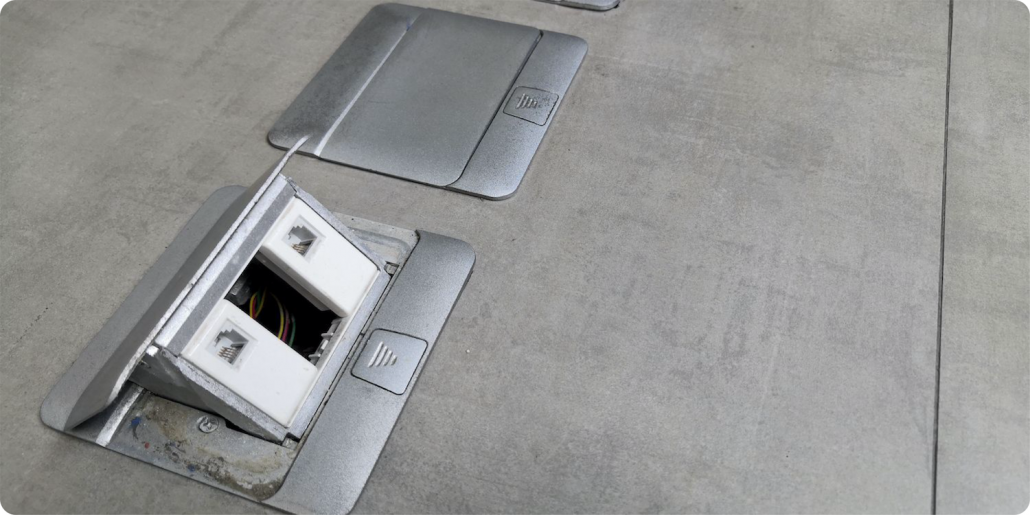August 14, 2020 | Cristina Dinulescu
An AFCI breaker, which is short for arc-fault circuit interrupter, is a great electrical safety device that helps reduce the risks of electrical fires. These types of circuit interrupters have been introduced in the late 1990s. However there are still homes today that don’t have arc-fault circuit interrupters, and there are plenty of myths that surround them often believed by homeowners.
AFCIs are very important when it comes to electrical safety, and their usefulness has been proven time and time again. The CPSC has several reports that inform homeowners about electrical fires due to arcing, and how these tend to occur behind walls. This makes them all the more dangerous, as they can be harder to detect and therefore can spread.
It’s important to understand how an AFCI circuit breaker can help mitigate that risk. Find below the answers to the most frequently asked questions about arc fault circuit interrupters and how they can help protect your home.
1. What Is an AFCI Breaker?
Simply put, an AFCI breaker is an advanced detection device that breaks the circuit when it detects an unsafe electric arc. It reduces the risk of electrical fire. It is capable to selectively differentiate between an innocuous arc, caused incidentally or through normal operation, and a potentially dangerous one.
The National Electrical Code in the US started requiring all circuits that feed bedroom outlets to have arc fault circuit interrupters in 1999. It added AFCI protection on all branch circuits in “family rooms, dining room, living rooms, parlors, libraries, dens, bedrooms, sunrooms, recreation rooms, closets, hallways, laundry areas, and similar rooms and areas” in 2008, and finally in kitchens in 2014.
Arc fault circuit interrupters are also required in dormitory units, but this prerequisite can be met with a combination breaker as well. This is a specific type of breaker that protects against parallel arcing, series arcing, and ground arcing, as well as against circuit overload and short circuit.
2. How Does an AFCI work?
If you’re not familiar with the term arcing, it refers to a prolonged electrical discharge, which can be intended or unintended. An arc fault is unintended arcing that happens when current flows through an unintentional line. This leads to high heat at the arcing point, sometimes even over 10,000 degrees Fahrenheit, which results in burning particles that can easily ignite the material surrounding them, like insulation or wood framing.
Standard circuit breakers detect when a circuit is overloaded or if there’s a short, but AFCIs use advanced technology to perceive the different arcing conditions. Different technologies are used to measure arcs, but the bottom line is that an AFCI will be able to detect parallel arcs, series arcs, and tell the difference between them. These breakers can “sense” both normal and dangerous arcing conditions. Here are some examples:
- Normal arcing conditions are sometimes created by regular equipment or home appliances, such as motor driven vacuum cleaners. Even a light switch can sometimes create an arc when it’s being turned off.
- Dangerous arcs mostly happen when the electrical insulation is damaged. Dirty areas, with a lot of dust in the air, are where most arc flashes occur.
The arc-fault circuit breaker analyzes the characteristics of the arc and determines if it’s a dangerous event or not. When going through the manufacturing process, the AFCIs are tested in hundreds of potential operating conditions, so they’re programed to constantly monitor these environments and detect changes.
3. Do You Really Need AFCIs?
The short answer is Yes. There are several emergency equipment devices that are meant to protect a property, from smoke alarms and fire extinguishers to escape routes and ladders. But the AFCIs are specifically designed to reduce the risk of your electrical system being the ignition source. There are low level dangerous arcing current that traditional overcurrent protective devices cannot detect.
Electrical fires are a way too common cause of residential fires in the US, and arc-fault circuit breakers just add an extra layer of much needed protection and prevention. They protect the circuits in your home and neutralize them before they become a source of electrical fire.
4. What Are The Types of AFCIs?
Arc-fault circuit breakers are required by the NEC in most homes and properties, and in most places as well. There is a national standard for this type of circuit breakers and they must all be evaluated by a testing lab that’s nationally recognized. There are 2 main types of AFCIs:
- Branch/Feeder Breaker AFCI
These are usually installed at the origin of the branch circuit or feeder, mainly the panelboard. They detect arcing faults that occur line-to-ground, line-to-neutral, and line-to-line. Older homes may require a two-pole AFCI in order to handle shared neutral circuits that have three-wire circuit arrangement.
- Combination Breaker AFCI
The combination breakers are great for detecting low level arcing. They are generally used in addition to the branch feeder circuit breaker, and they can detect arcing as low as 5 Amps. Combination AFCI works for both power supply cords and branch circuits. AS of January, 2020, the combination arc-fault circuit breakers are also required by the NEC.
5. Do They Require Special Installation?
There’s no special requirements when it comes to the installation of AFCI breakers, but, just as with any other electrical work, proper wiring practices and installation by a qualified electrician are necessary. However, if there are particular circuits that vary from the norm, then special considerations may be made.
A conventional circuit breaker is installed by connecting the hot conductor to the thermal magnetic breaker and the neutral conductor directly to the load center’s neutral bar. The difference with the AFCI breaker is that both conductors, hot and neutral, are connected to the terminals of the arc-fault circuit interrupter.
The right electrical upgrade can dramatically improve the value and appearance of any home or business. You’ll be amazed at what a difference the right electrical upgrade can make for your home or business. Make sure that when you select an electrical company to do the enhancement of your home and you have decided to take your enhancement to the level where you require an electrical upgrade that the technician at the company has a good working knowledge and the experience to properly guide you in this area.
When you decide to upgrade, our well-trained and certified electricians have all the experience and training needed to complete your electrical panel upgrade project from start to finish, with a minimum of fuss or disturbance. Please contact us right away at 310-800-2401








